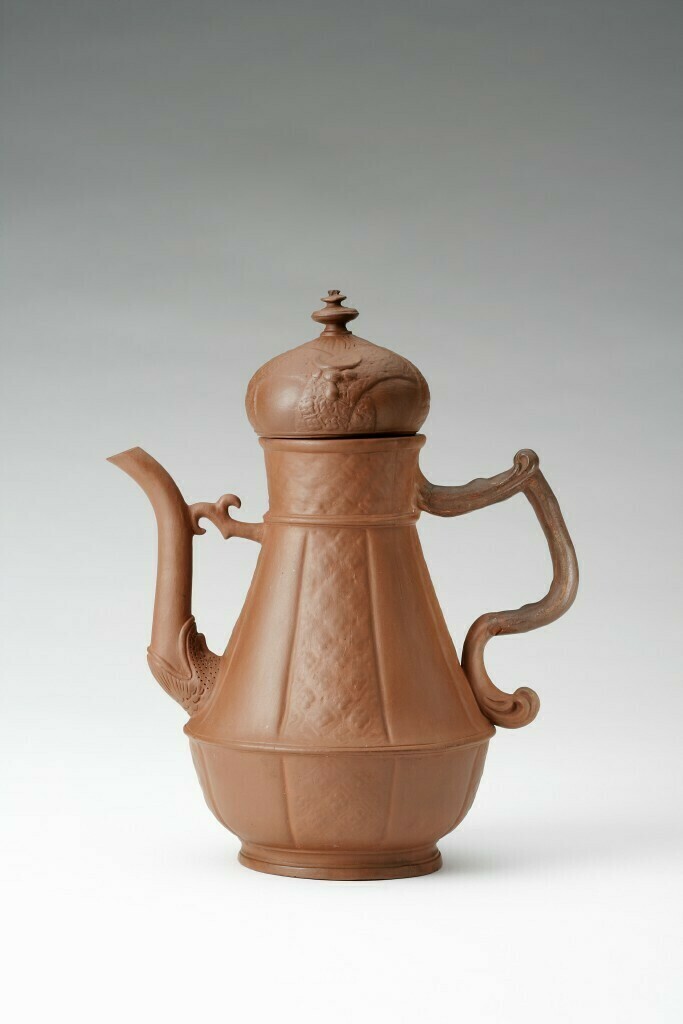Kanne mit turbanartigem oder Türkenbund-Deckel und geschwungenem geknicktem Henkel; die achtfach vertikal geteilte Wandung mit stilisiertem, schwach reliefiertem Blütenmuster (aus der Form gewonnen); das geschwungene Ausgussrohr aus einem Fischmaul wachsend.Der Gefäßtyp geht auf islamische Kannenformen, der Reliefdekor auf chinesische Vorbilder zurück. Als „Türkische Caffee-Kanne“ schon 1710 im Manufakturprogramm, wurde sie 1711 im Inventar der Meissener Manufaktur als „Türkisch Coffe Krügel“ erwähnt. )
ohne Marke
Ankauf von Gustav Werner, Leipzig, 1944
en

